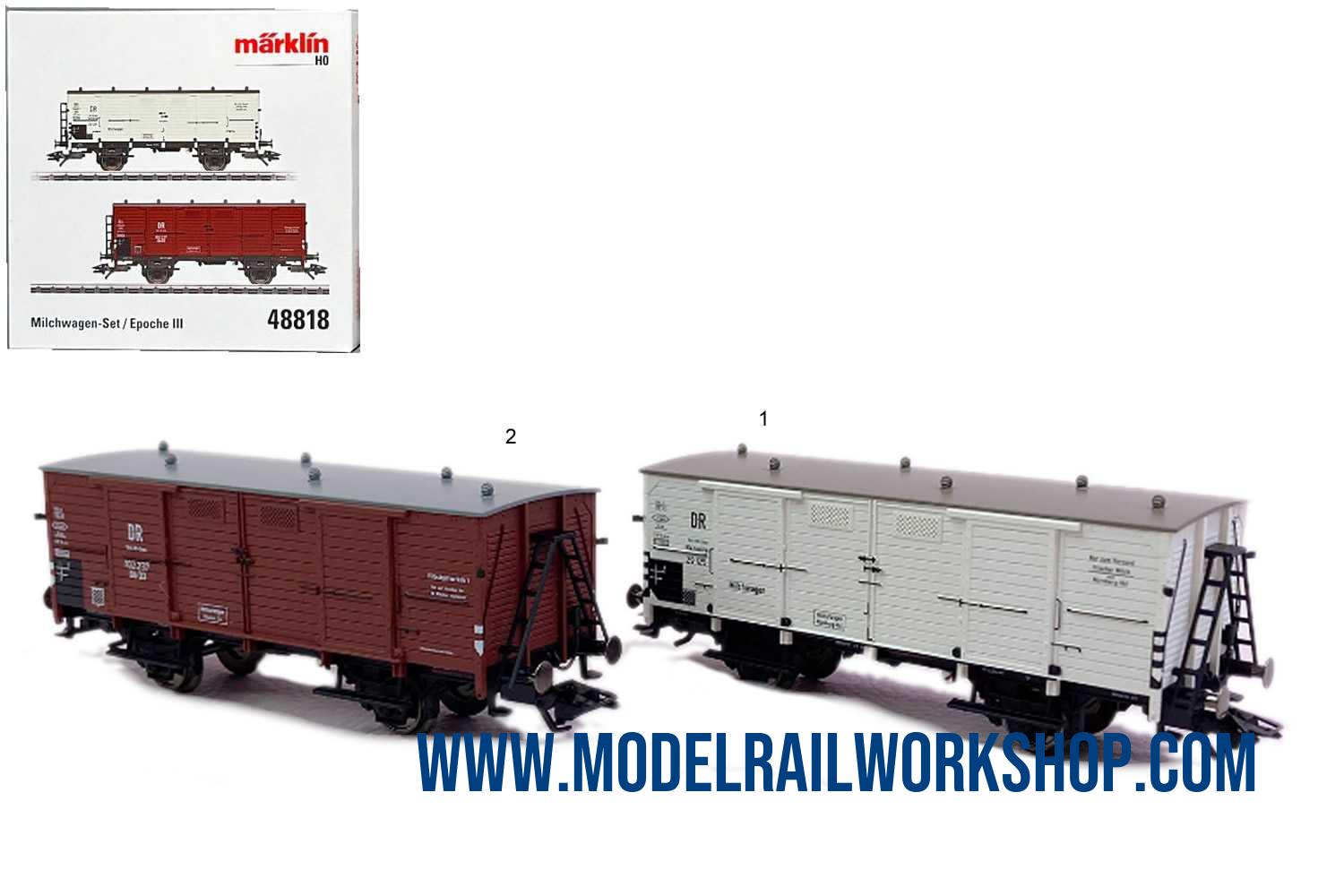
| KEY DATA | |
|---|---|
| Product Name | 48818 Box car set with two cars - Milch transport cars |
| Object type | Car-Closed box car |
| Product Line | Märklin Special Model |
| Era | 1925-1945 (II) |
| Manufactured years | 2022-2024 |
| Type of housing | Synthetic |
| Length | 22.2 cm |
| Technology | - |
| Railway company | DE-DRG Deutsche Reichsbahn-Gesellschaft (1920/24-1937) |
| Märklin RRP (Year) | 90€ (2024) |
| Url to Märklin | Klick to GoTo www.maerklin.de |
| No | Obj.No | Obj.txt | Category | Description |
|---|---|---|---|---|
| 48818-1 | 29 125 | DR - Milchwagen - Hannover | - | Box car - White |
| 48818-2 | 102 237 | DR - Heimatwagen | Gh 03 | Box car - Brown |
| Description | |
|---|---|